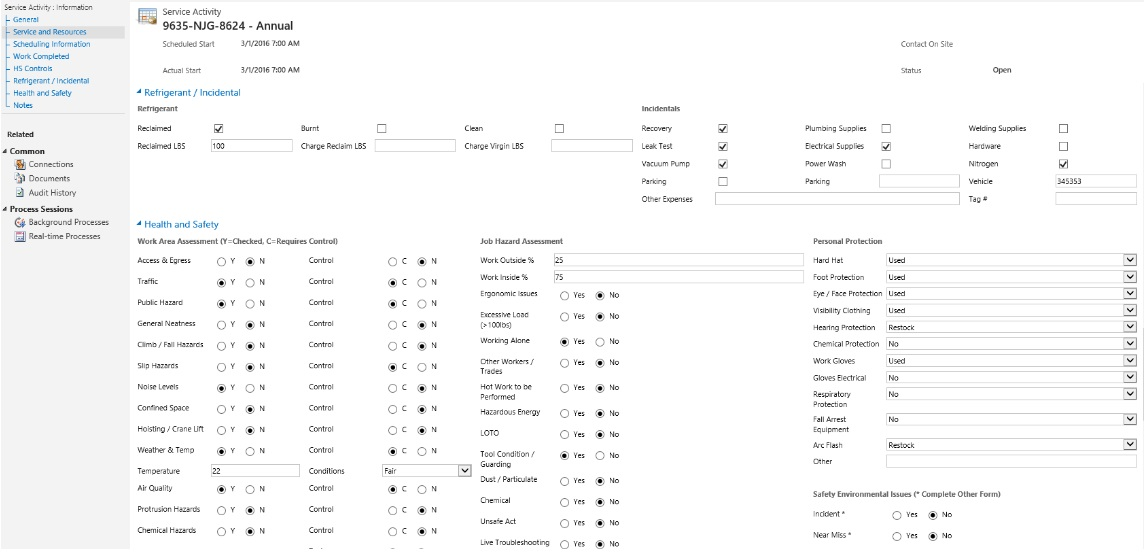The job of the HVAC/R unit you install is to keep your clients cool or warm. But the fundamental substance that makes this heating and cooling equipment run — refrigerant — is undergoing a massive shift globally and if you’re not on top of the HVAC refrigerants HFC phase-down, new regulations, and end-dates your company could be left out in the cold.
The Montreal Protocol, put into effect in 1989, is an international treaty designed to protect the ozone layer by phasing out the production of numerous substances that are responsible for ozone depletion. Some of the most common and popular refrigerants used in HVAC equipment today are being phased out and replaced by newer, more environmentally friendly alternatives.
CFCs were the first to be phased-out. HCFC’s, specifically R-22, is currently in the process of being phased-out. On or after January 1, 2020, no new or imported R-22 will be allowed into the United States. Then, the only available material will come from recycling, which today accounts for less than 10% of needs. R-22 is indicative of how generations of refrigerants can lapse before the equipment does. As well, the prices for R-22 will continue to rise as a shortage looms. There is simply not enough refrigerant to fill all the needs for all the equipment in service using R-22 in the United States.
HFC’s, the 3rd generation of refrigerants, are next on the list and have already begun to be phased down while new alternatives are tested. Created in the 1990’s to replace CFC’s, HFCs turned out to be catastrophic for global warming. Although they are safe for the ozone layer, they are thousands of times worse for trapping heat than carbon dioxide. In 2015, the EPA ruled in favour of the HVAC Refrigerants HFC phase-down under the SNAP program (Significant New Alternatives Policy). However, on August 8, 2017, the U.S. Court of Appeals ruled in favor of two chemical companies in the case of EPA vs. Mexichem Fluor & Arekema. The court stated the EPA cannot ban HFCs under Section 612 of the Clean Air Act because that provision was designed only to address ozone-depleting substances. EPA had an opportunity to appeal the ruling but chose not to. Two refrigerant manufacturers, Honeywell and Chemours, along with the National Resources Defense Council filed a petition for rehearing of the August D.C. Circuit Court of Appeals’ ruling.
A growing alliance of industry and states agree that this regulation is in the best interest of public health, industry and the environment. In its initial decision, the Court agreed that next-generation technologies such as HFOs are better for human health and the environment. Phasing down the use of outdated HFCs is a critical step that the world is taking to drastically reduce the environmental impact of refrigerants, aerosols, solvents, and blowing agents. Stephen Yurek, president and CEO of the Air-Conditioning, Heating, and Refrigeration Institute (AHRI) said: “Despite the court’s decision, our industry remains committed to ratification and implementation of the Kigali Amendment to globally phase down the use of HFC refrigerants.”
The Kigali Amendment to the Montreal Protocol calls for a global HVAC refrigerants HFC phase-down. The U.S. was a party to the amendment, but to go into effect, the Senate would need to ratify it. If the Senate does that, HFCs will certainly need to be regulated in some way or the other for the U.S. to meet its commitments.
Canada is among the first countries to ratify the Kigali Amendment to the Montreal Protocol, which will phase down these powerful greenhouse gases. To succeed in phasing down HFCs, Canada recently published regulations to reduce its HFC consumption by 85 percent, by 2036.
We are now entering a world that truly considers the impact of our choices not only financially but also environmentally, and we are trying to find the right alternative refrigerants, ones that have high performance and are also safe to the public, the technicians working with the refrigerants, and to the environment.
David Doniger, director of the climate and clean air program at the Natural Resources Defense Council, which is appealing the D.C. Court decision, said “The fact is, safer, climate-friendlier alternatives are readily available and should be used more to help cool our overheating world. It’s also true that the U.S. has been a leader in advancing HFC alternative technologies. … We cannot go backward, or the climate damage suffered by the American people will only magnify.”
The fact of the matter is, HVAC refrigerants will continue to be phased out or down and a whole new generation of equipment and refrigerants will be introduced. As a contractor, it is your job to make sure your technicians are up to speed as to what’s being phased out or phased down and when, what alternative refrigerants are available and how to handle them safely, and new regulations around refrigerant recovery, recycling, and disposal.
Contact FIELDBOSS and learn how we can help you track leaks and report refrigerant use including date and time of service, set up and track work area assessment, job hazard assessment, personal protection, and safety environmental issues for each of your service activities and requests.

Learn more about the R-22 Phase Out here.
#HVACR #FIELDBOSS #R22 #HVACRRefrigerants #HVACRRefrigerantPhaseDowns #HFCRefrigerants #HVACRRefrigerantNewRegulations